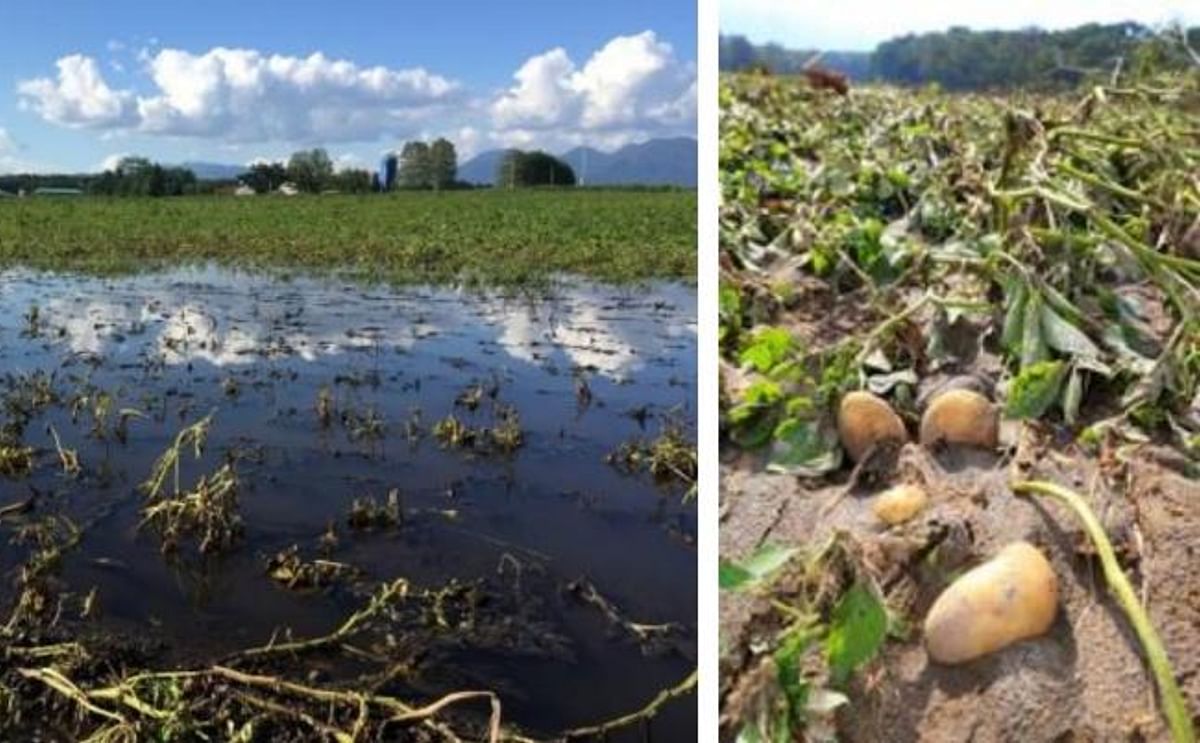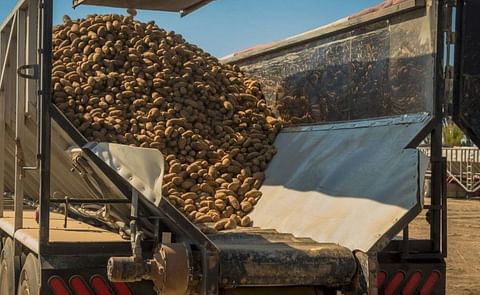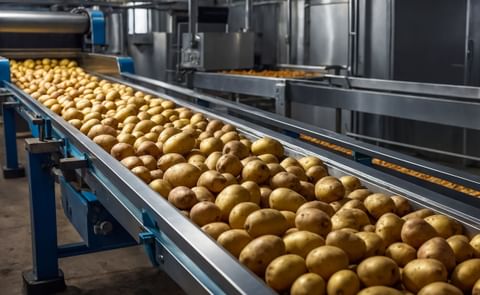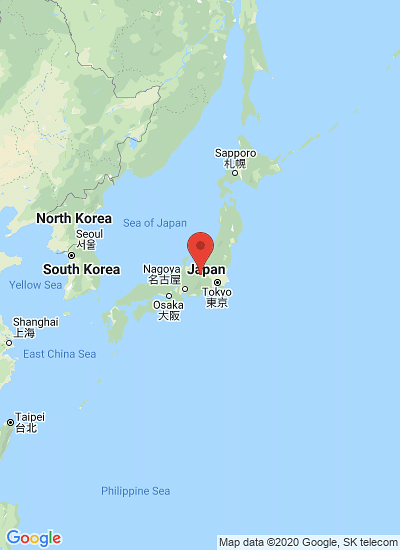These pictures depict the floods in Hokkaido potato farms (left) and potato losses due to soil runoff and exposure as a result of typhoons striking Japan's largest fresh potato production region in August of 2016.
USDA: Summer Typhoons Reduce Japanese Potato Production

Hokkaido is located 600 miles north of Tokyo and is Japan's largest fresh potato producing region,
accounting for nearly 80 percent of total domestic production. Agriculture in Hokkaido is relatively
large in scale and the weather is cool, providing suitable conditions for potato cultivation.
Hokkaido is generally spared from the rainy seasons and typhoon strikes that more often afflict the southern islands.
However, four typhoons struck Hokkaido in August 2016 for the first time since record keeping began more than 100 years ago.
The Ministry of Agriculture, Forestry and Fisheries (MAFF) reported that approximately 24,000 ha of land received damaging levels of rain as well as flooding, including those producing fresh potatoes.
USDA FAS representation in Japan estimates a 20 percent yield loss, reducing national production to 1.9 million metric tons (MMT) in MY 2016/2017 compared to 2.4 MMT in MY 2015/16. They have adopted a conservative forecast given the continued uncertainty of the damage, and acknowledges some reports of damage in excess of 25 percent.
As of mid-September, some farms were still too wet for harvester entry, and overall potato harvest in Hokkaido is behind schedule. Some farmers have plowed-under potatoes to prepare for wheat cultivation, which usually follows potatoes as a rotation crop. In addition, further losses are expected during storage due in part to high moisture content of harvested potatoes.
Farms designated to produce seed potatoes were affected by the typhoons and floods in 2016 and USDA-FAS estimates a minimum loss of 10 percent to seed potato production. Therefore a decrease in planted area to 70,000 ha is forecasted, a 9.5% decrease from MY 2016/17.
Hokkaido is generally spared from the rainy seasons and typhoon strikes that more often afflict the southern islands.
However, four typhoons struck Hokkaido in August 2016 for the first time since record keeping began more than 100 years ago.
The Ministry of Agriculture, Forestry and Fisheries (MAFF) reported that approximately 24,000 ha of land received damaging levels of rain as well as flooding, including those producing fresh potatoes.
USDA FAS representation in Japan estimates a 20 percent yield loss, reducing national production to 1.9 million metric tons (MMT) in MY 2016/2017 compared to 2.4 MMT in MY 2015/16. They have adopted a conservative forecast given the continued uncertainty of the damage, and acknowledges some reports of damage in excess of 25 percent.
As of mid-September, some farms were still too wet for harvester entry, and overall potato harvest in Hokkaido is behind schedule. Some farmers have plowed-under potatoes to prepare for wheat cultivation, which usually follows potatoes as a rotation crop. In addition, further losses are expected during storage due in part to high moisture content of harvested potatoes.
Farms designated to produce seed potatoes were affected by the typhoons and floods in 2016 and USDA-FAS estimates a minimum loss of 10 percent to seed potato production. Therefore a decrease in planted area to 70,000 ha is forecasted, a 9.5% decrease from MY 2016/17.
Like to receive news like this by email? Join and Subscribe!
NEW! Join Our BlueSky Channel for regular updates!
Sponsored Content
Sponsored Content
Sponsored Content
Sponsored Content
Sponsored Content






